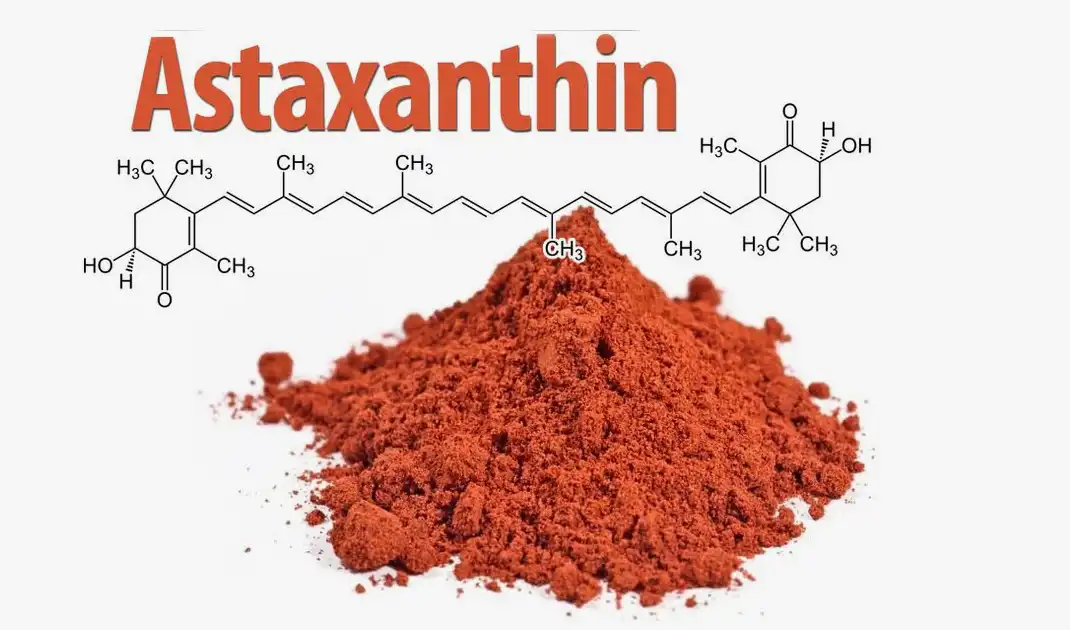Haematococcus Pluvialis Powder Whole-Cell vs. Extract — Which Wins?
Haematococcus pluvialis, a microalgae renowned for its high astaxanthin content, has garnered significant attention in the health and wellness industry. As consumers become increasingly interested in natural antioxidants, the debate between whole-cell Haematococcus pluvialis powder and its extract form has intensified. Both options offer unique benefits and drawbacks, leaving many to wonder which form is superior. This article delves into the nutrient composition, bioavailability, antioxidant properties, and processing techniques of Haematococcus pluvialis powder in both its whole-cell and extract forms. By examining these factors, we aim to provide a comprehensive comparison to help readers make informed decisions about which form may be more suitable for their specific needs and applications.


Nutrient Composition and Astaxanthin Bioavailability in Haematococcus Pluvialis Powder
Whole-Cell Nutrient Profile
Haematococcus pluvialis powder in its whole-cell form offers a complex nutrient profile that extends beyond just astaxanthin. This red or dark red powder contains a variety of beneficial compounds, including proteins, carbohydrates, lipids, and other carotenoids. The whole-cell powder preserves the natural matrix of the algae, which may contribute to enhanced stability and synergistic effects among its components. Additionally, the intact cell walls of the whole-cell powder can act as a protective barrier, potentially improving the shelf life of the product. However, these same cell walls may also impact the bioavailability of astaxanthin and other nutrients, as they need to be broken down during digestion for optimal absorption.
Extract Nutrient Concentration
Haematococcus Pluvialis Powder, on the other hand, typically offers a more concentrated form of astaxanthin. The extraction process removes much of the cellular material, resulting in a product with a higher percentage of astaxanthin by weight. This concentrated form allows for easier standardization and dosing in various applications, such as supplements, cosmetics, and functional foods. The extract may also undergo further processing to enhance its solubility or stability, making it more versatile in different formulations. However, the extraction process may potentially remove or alter some of the other beneficial compounds found in the whole-cell powder, potentially reducing the overall nutrient diversity of the product.
Bioavailability Considerations
The bioavailability of astaxanthin from Haematococcus pluvialis powder is a crucial factor in determining its efficacy. Whole-cell powder may have lower immediate bioavailability due to the presence of cell walls, which can hinder the release of astaxanthin. However, some studies suggest that the natural lipid matrix in whole-cell powder may actually enhance astaxanthin absorption over time. In contrast, extracts often demonstrate higher initial bioavailability due to the removal of cellular barriers. The choice between whole-cell and extract forms may depend on the desired onset and duration of effects, as well as the specific application of the product.
Comparing Antioxidant and Anti-Inflammatory Benefits of Whole-Cell vs. Extract Forms
Antioxidant Potency
Both whole-cell Haematococcus pluvialis powder and its extract form exhibit strong antioxidant properties, primarily due to their high astaxanthin content. Astaxanthin is known for its exceptional ability to neutralize free radicals and reduce oxidative stress in the body. Whole-cell powder may offer a more diverse antioxidant profile due to the presence of other naturally occurring compounds that work synergistically with astaxanthin. These additional antioxidants, such as beta-carotene and lutein, may contribute to a broader spectrum of protective effects. On the other hand, the extract form typically provides a higher concentration of astaxanthin, which may lead to more potent antioxidant activity on a per-weight basis. The choice between whole-cell and extract forms for antioxidant benefits may depend on whether a more holistic or targeted approach is desired.
Anti-Inflammatory Effects
Haematococcus pluvialis powder, in both whole-cell and extract forms, has demonstrated significant anti-inflammatory properties. The anti-inflammatory effects are primarily attributed to astaxanthin's ability to modulate various inflammatory pathways in the body. Whole-cell powder may offer additional anti-inflammatory compounds that work in concert with astaxanthin, potentially providing a more comprehensive approach to inflammation reduction. Extract forms, with their higher astaxanthin concentration, may deliver more targeted and potent anti-inflammatory effects. The choice between whole-cell and extract forms for anti-inflammatory benefits may depend on the specific health concerns being addressed and the desired intensity of the anti-inflammatory action.
Synergistic Effects
One of the key considerations when comparing whole-cell Haematococcus pluvialis powder to its extract form is the potential for synergistic effects among the various compounds present. Whole-cell powder retains the natural balance of nutrients and phytochemicals found in the algae, which may lead to enhanced overall health benefits through compound interactions. These synergistic effects could potentially result in greater antioxidant and anti-inflammatory outcomes than would be expected from the individual components alone. Extract forms, while more concentrated in astaxanthin, may lack some of these synergistic benefits due to the removal of other compounds during processing. The decision between whole-cell and extract forms may thus depend on whether a more holistic or targeted approach to health benefits is desired.
Processing Techniques and Stability Factors Influencing Haematococcus Pluvialis Powder Quality
Extraction Methods
The processing techniques used to produce Haematococcus pluvialis powder significantly impact its quality and efficacy. For whole-cell powder, gentle drying methods such as spray-drying or freeze-drying are typically employed to preserve the integrity of the algal cells and their nutrient content. These methods help maintain the natural matrix of the algae, potentially enhancing the stability and bioavailability of astaxanthin. Extract production, on the other hand, involves more complex processes such as supercritical CO2 extraction or solvent extraction. These techniques aim to isolate and concentrate astaxanthin while removing cellular debris. The choice of extraction method can affect the purity, yield, and overall quality of the final product. Manufacturers must carefully consider these factors to ensure the production of high-quality Haematococcus pluvialis powder that meets industry standards and consumer expectations.
Stability Considerations
The stability of Haematococcus pluvialis powder is crucial for maintaining its potency and efficacy over time. Whole-cell powder may have an advantage in terms of stability due to the natural protective mechanisms of the algal cells. The intact cell walls can shield astaxanthin and other compounds from oxidation and degradation, potentially leading to a longer shelf life. However, proper storage conditions, such as protection from light and heat, are still essential for preserving the quality of whole-cell powder. Extract forms, while more concentrated, may be more susceptible to oxidation due to the removal of natural protective barriers. To address this, manufacturers often employ additional stabilization techniques, such as microencapsulation or the addition of antioxidants, to enhance the stability of extract powders. The choice between whole-cell and extract forms may thus depend on the intended storage conditions and shelf-life requirements of the final product.
Quality Control Measures
Ensuring the quality and consistency of Haematococcus pluvialis powder requires rigorous quality control measures throughout the production process. For whole-cell powder, this includes monitoring the cultivation conditions of the algae to optimize astaxanthin production and maintain consistent nutrient profiles. Harvesting techniques and post-harvest handling are also critical to preserving the integrity of the algal cells. In extract production, quality control focuses on the extraction process itself, ensuring optimal yield and purity of astaxanthin while minimizing the presence of unwanted compounds or contaminants. Both forms require thorough testing for astaxanthin content, microbial contamination, and potential adulterants. Reputable manufacturers, such as Avans NutriHealth Co., Ltd., adhere to strict quality control protocols and certifications (e.g., ISO, USDA, HACCP, FSSC22000, HALAL) to ensure the production of high-quality Haematococcus pluvialis powder suitable for various applications in food, health care products, medicine, and cosmetics.
Conclusion
In the debate between whole-cell Haematococcus pluvialis powder and its extract form, both options offer unique advantages. Whole-cell powder provides a more comprehensive nutrient profile and potential synergistic effects, while extracts offer higher astaxanthin concentration and potentially greater bioavailability. The choice between the two forms ultimately depends on the specific application, desired effects, and individual needs. Factors such as processing techniques, stability, and quality control measures play crucial roles in determining the overall efficacy of the product. As research continues to evolve, both forms of Haematococcus pluvialis powder remain valuable options for harnessing the powerful antioxidant and anti-inflammatory properties of astaxanthin.
Avans NutriHealth Co., Ltd. is a leading manufacturer and supplier of high-quality plant extracts, including Haematococcus pluvialis powder, in China. With a commitment to producing natural and safe raw materials, Avans NutriHealth utilizes advanced R&D capabilities, stringent quality control measures, and innovative processing techniques to deliver exceptional products. The company's expertise extends to various industries, including food, health care products, medicine, and cosmetics. With an annual production capacity of 1,000 tons and a dedicated team of experts, Avans NutriHealth is well-equipped to meet diverse customer needs and provide personalized solutions. For more information or inquiries, please contact us at Lillian@avansnutri.com.
FAQ
Q: What is the main difference between whole-cell Haematococcus pluvialis powder and its extract form?
A: Whole-cell powder contains the entire algal cell with a diverse nutrient profile, while the extract form offers a more concentrated astaxanthin content.
Q: Which form of Haematococcus pluvialis powder has better bioavailability?
A: Extract forms typically have higher initial bioavailability, but whole-cell powder may offer sustained release due to its natural lipid matrix.
Q: Are there any synergistic effects in whole-cell Haematococcus pluvialis powder?
A: Yes, whole-cell powder may offer synergistic effects due to the presence of multiple compounds that work together to enhance overall health benefits.
Q: How does the stability of whole-cell powder compare to extract forms?
A: Whole-cell powder often has better stability due to natural protective mechanisms, while extracts may require additional stabilization techniques.
Q: What are the main applications of Haematococcus pluvialis powder?
A: It is commonly used in food, health care products, medicine, and cosmetics due to its potent antioxidant and anti-inflammatory properties.
References
1. Shah, M. M., et al. (2016). Astaxanthin-producing green microalga Haematococcus pluvialis: from single cell to high-value commercial products. Frontiers in Plant Science, 7, 531.
2. Ambati, R. R., et al. (2014). Astaxanthin: Sources, extraction, stability, biological activities, and its commercial applications—A review. Marine Drugs, 12(1), 128-152.
3. Kim, S. K., et al. (2011). Cosmeceuticals from marine sources. In Marine Cosmeceuticals: Trends and Prospects (pp. 1-9). CRC Press.
4. Lorenz, R. T., & Cysewski, G. R. (2000). Commercial potential for Haematococcus microalgae as a natural source of astaxanthin. Trends in Biotechnology, 18(4), 160-167.
5. Guerin, M., et al. (2003). Haematococcus astaxanthin: applications for human health and nutrition. Trends in Biotechnology, 21(5), 210-216.
6. Capelli, B., & Cysewski, G. (2013). The world's best-kept health secret: Natural astaxanthin. Cyanotech Corporation.



